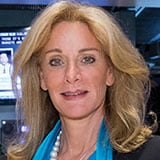It’s an interesting time in the markets, as bulls and bears continue to fight for control, with neither side getting a clear upper hand in the minds of MoneyShow attendees taking our latest investment sentiment survey, notes MoneyShow’s Chair and CEO Kim Githler.
The last time we surveyed MoneyShow attendees, the Dow Industrial Average had just declined 1,000 points from near all-time highs. In the three months since, the market has rebounded the same distance, once again sitting near record-high levels.
Despite this intervening volatility, investors remain surprisingly unmoved. Indeed, our latest survey shows that investor sentiment is virtually unchanged over the last few months, as investors remain cautiously optimistic about the future.
While respondents lean towards the bullish side of the ledger, their optimism is tempered by a lackluster outlook for economic growth.
Nearly half our respondents expect a somewhat bullish advance of less than 10% for the remainder of the year. Only one in five—the same level as last February—expect a market decline.
Cash levels, however, suggest a lack of excessive bullishness. Only one in five respondents is close to fully invested, with cash of less than 5%. One-third hold cash reserves of 5% to 20%, one in four hold over 20% in cash, and nearly one in five holds more than 50% of their current portfolio in cash.
Investor plans for allocating that cash also suggest a sense of “risk-off” thinking, as those planning to add to their positions are focused solidly on US equities; 45% of respondents plan on adding to their stakes in large-cap US stocks and 38% expect to buy small- or mid-cap US equities.
Outside of this more traditional investing arena, interest drops off rapidly. Less than one in five plan to buy either international stocks or emerging market positions. Even smaller numbers of investors expect to buy positions in real estate and REITs, precious metals, commodities, or currencies.
The least attractive market for new cash? Bonds. In fact, only 4% of respondents said they expect to put any cash to work in Treasury bonds, while a mere 3% are expecting to buy international bonds. Corporate bonds also saw very low interest from just 9% of investors surveyed.
Our survey results regarding the economic outlook support the bearish assessment for bonds and the “slow but steady” bullishness behind stocks.
Most respondents expect inflation to remain contained at current levels and within a narrow band between 1% and 3%. Statistically, no one expects deflation and only one in ten expect a resurgence in inflation above 3%.
Few see a significant decline in the unemployment rate; only 2% expect the rate to decline below 5%. Indeed, two-thirds expect the unemployment rate to stay at current levels or rise only modestly.
A similar two-thirds of respondents expect the US economy to continue growing at a modest pace below 3%. Few see a sharp pick-up, and even fewer see a sharp slow-down. Interestingly, our survey participants are less optimistic about the economy than economists in general, who currently forecast GDP above 3% in coming quarters.
Given this sub-par economic outlook, few investors see a major move ahead for gold. Sixty-nine percent of those surveyed expect gold to remain range-bound between $1,200 to $1,500. Less than one in five expect a move above $1,500 and a statistically meaningless 2% expect a rise above the $2,000 mark.
At the same time, respondents see little downside risk in gold, with only one in ten expecting prices to decline below $1,200. With expectations for little movement in gold, then it should not be a surprise that only one in ten respondents expects to add to their gold positions.
In summary, we have seen the broad market rise since our last survey in February—but these gains have not compelled investors to take on increased risk. Expectations for “more of the same” have kept our survey participants leaning to the bullish side, but not expecting too much from either the economy or the markets.
They are hesitant about reaching for gains in global, emerging, and alternative markets and appear content to make slow but steady returns in the safer harbor of US equities.




















